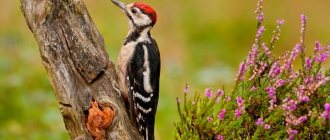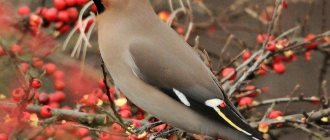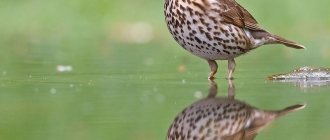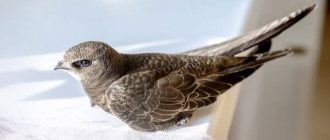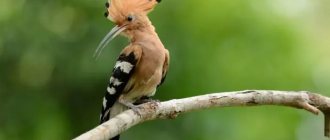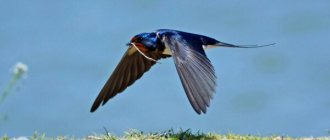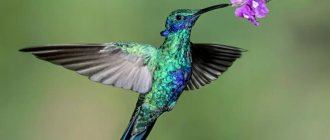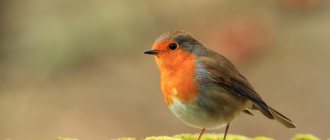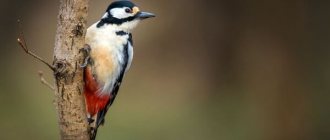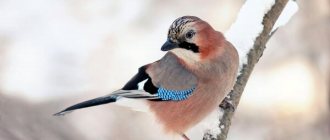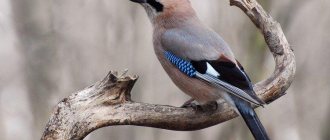Other meanings of this word:
- Blue Andigena
- The length of this bird's beak is equal to the length of its body
- Woodpecker from South America
- Woodpecker with a powerful beak
- woodpecker of the South American tropics
- woodpecker of South American “nationality”
- pepper-eating woodpecker of the tropics of America
- Pepper-eating woodpecker of the American tropics.
- behind him is Siberia
- transoceanic pepper-eating woodpecker
- Transoceanic pepper-eating woodpecker.
- overseas relative of the woodpecker
- beak Serrated and long, in Mexico to Argentina - in the tropical forest it holds, poor thing, on weight
- Beak Serrated and long, in Mexico to Argentina - in the tropical forest it holds, poor thing, on weight
- feathered lover of hot peppers
- Feathered lover of hot peppers.
- Feathered peppereater
- feathered pepper eater from the tropics
- Pepper eater
- Woodpecker peppereater
- pepper eater in a different way
- bird and constellation
- Bird or constellation
- Pepper eater bird
- Bird with a big beak
- Bird, pepper eater
- rainbow woodpecker
- Constellation in which the Small Magellanic Cloud is located
- same as pepper eater
- Toko
- American rainforest bird with a large, serrated beak
- tropical bird, pepper eater
- tropical woodpecker
- Tropical pepper-eating woodpecker
- Tropical pepper beetle
- Noisy bird from the tropics
- this constellation of the Northern Hemisphere contains the Small Magellanic Cloud - a satellite of the Galaxy
- South American tropical woodpecker
- South American tropical woodpecker.
- South American bird, also called peppereater
- South American tropical woodpecker
- Bright bird with a large beak
- bright bird with a huge beak
Random joke:
Myths of Ancient Greece: Centaur - half-man, half-horse. The Minotaur is a man with the head of a bull. Question: Do you love animals as much as the ancient Greeks loved them?
black woodpecker
In another way, this bird is called yellow. Its range is limited to Eurasian forests. Zhelna is quite large, reaches a length of 49 centimeters and weighs 450 g. The wingspan ranges from 64 to 80 centimeters.
Adult males have shiny black plumage. The top of the head is colored bright red, resembling a cap (sometimes called red-headed). Females are distinguished by a smaller cap size, expressed only on the back of the head. Juveniles look approximately the same as adults, differing only in the less pronounced spots on the head or its complete absence. The voice of this bird can be heard throughout the year.
The black woodpecker chooses to live in small islands of forest , and can also settle in continuous taiga areas. It can often be found in deforested or burnt areas of forest. The diet of the black woodpecker is not limited to insects obtained from wood. In addition to beetles and ants, it can also eat fruits, berries and seeds of coniferous trees. The black woodpecker is a monogamous bird. The fertile period begins at the end of the first year of life. Pairs are formed for one season. However, couples inhabiting the same area of forest often reunite the next year.
Other meanings of this word:
- Blue Andigena
- The length of this bird's beak is equal to the length of its body
- Woodpecker from South America
- Woodpecker with a powerful beak
- woodpecker of the South American tropics
- woodpecker of South American “nationality”
- pepper-eating woodpecker of the tropics of America
- Pepper-eating woodpecker of the American tropics.
- behind him is Siberia
- transoceanic pepper-eating woodpecker
- Transoceanic pepper-eating woodpecker.
- overseas relative of the woodpecker
- beak Serrated and long, in Mexico to Argentina - in the tropical forest it holds, poor thing, on weight
- Beak Serrated and long, in Mexico to Argentina - in the tropical forest it holds, poor thing, on weight
- feathered lover of hot peppers
- Feathered lover of hot peppers.
- Feathered peppereater
- feathered pepper eater from the tropics
- Pepper eater
- Woodpecker peppereater
- pepper eater in a different way
- bird and constellation
- Bird or constellation
- Pepper eater bird
- Bird with a big beak
- Bird, pepper eater
- rainbow woodpecker
- Constellation in which the Small Magellanic Cloud is located
- same as pepper eater
- Toko
- American rainforest bird with a large, serrated beak
- tropical bird, pepper eater
- tropical woodpecker
- Tropical pepper-eating woodpecker
- Tropical pepper beetle
- Noisy bird from the tropics
- this constellation of the Northern Hemisphere contains the Small Magellanic Cloud - a satellite of the Galaxy
- South American tropical woodpecker
- South American tropical woodpecker.
- South American bird, also called peppereater
- South American tropical woodpecker
- Bright bird with a large beak
- bright bird with a huge beak
Complex works “Woodpecker”, “Rhinoceros”.
| grammatical basis | verb | |
| Sounds | ||
| noun | vowels | |
| adjective | Composition of the word | root |
| ending | pretext | |
| Parts of speech | ||
| stem of the word | console | |
| narrative | Offer | consonants |
| common | emphasis |
Rhinoceroses
Rhinoceros
is a mammal of the rhinoceros family, common in Asia and Africa. Today there are five species of rhinoceros: Indian, Javan, Sumatran, white and black. The rhinoceros is the second largest land animal after the elephant. They all differ from each other in place of residence and appearance.
The rhinoceros has a massive body and thick limbs. Each of the limbs has three fingers that turn into hooves. The neck is short, the back is slightly concave, the spine is sharp, the belly is saggy. The body length of a rhinoceros is approximately 4 meters, the height reaches 2 meters, the weight on average is 3 tons, but sometimes an adult rhinoceros can weigh about 5 tons. They have thick skin and 1-2 horns on their heads. Sometimes there can be 3-5 horns (in a black rhinoceros). The structure of the horn resembles a hoof, that is, it is a skin formation. Its length can exceed 1.5 m.
These are very timid and cautious animals, avoiding closeness to humans. However, if they feel threatened, they attack. And although these attacks are poorly aimed due to poor vision, they can lead to severe injuries due to the enormous strength and sharp horn. Having accelerated, a rhinoceros can reach a speed of 45 km/h.
Rhinoceroses are often accompanied by birds, which sit on their skin and clean them of parasites. The skin of rhinoceroses is highly sensitive to the sun's rays and insect bites. Rhinoceroses often roll in the mud to protect themselves from the scorching sun and annoying insects.
Rhinos have very poor vision, but this is compensated by their excellent hearing and sense of smell. Rhinoceroses are most active in the morning and evening twilight. During the day they prefer to hide from the heat in the shade of trees. They rest lying or standing, sleep at night with their legs tucked under them and their heads on the ground.
Rhinoceroses feed on grass, leaves, young branches of bushes and trees. Different types of rhinoceroses have different diets. They live alone or in pairs (female with cub). The female gives birth to one cub (very rarely two) every 2-3 years after 17-19 months of gestation. The cub remains with the mother until the next offspring is born.
How long will rhinos live on Earth? There are very few of them left, and those who are still alive continue to be exterminated. There is a high demand for rhino horns in Asia. They are used for jewelry and in traditional Chinese medicine. Medicines made from rhinoceros horn are highly valued and are included in traditional Chinese recipes, including elixirs of longevity and “immortality.” Because of this market, rhinoceroses are in danger of extinction. However, recently there has been a slight increase in the population.
Other meanings of this word:
- Blue Andigena
- The length of this bird's beak is equal to the length of its body
- Woodpecker from South America
- Woodpecker with a powerful beak
- woodpecker of the South American tropics
- woodpecker of South American “nationality”
- pepper-eating woodpecker of the tropics of America
- Pepper-eating woodpecker of the American tropics.
- behind him is Siberia
- transoceanic pepper-eating woodpecker
- Transoceanic pepper-eating woodpecker.
- overseas relative of the woodpecker
- beak Serrated and long, in Mexico to Argentina - in the tropical forest it holds, poor thing, on weight
- Beak Serrated and long, in Mexico to Argentina - in the tropical forest it holds, poor thing, on weight
- feathered lover of hot peppers
- Feathered lover of hot peppers.
- Feathered peppereater
- feathered pepper eater from the tropics
- Pepper eater
- Woodpecker peppereater
- pepper eater in a different way
- bird and constellation
- Bird or constellation
- Pepper eater bird
- Bird with a big beak
- Bird, pepper eater
- rainbow woodpecker
- Constellation in which the Small Magellanic Cloud is located
- same as pepper eater
- Toko
- American rainforest bird with a large, serrated beak
- tropical bird, pepper eater
- tropical woodpecker
- Tropical pepper-eating woodpecker
- Tropical pepper beetle
- Noisy bird from the tropics
- this constellation of the Northern Hemisphere contains the Small Magellanic Cloud - a satellite of the Galaxy
- South American tropical woodpecker
- South American tropical woodpecker.
- South American bird, also called peppereater
- South American tropical woodpecker
- Bright bird with a large beak
- bright bird with a huge beak
Features of anatomy
Woodpeckers feed on insects, which they get from wood. This is facilitated by some structural features of the body:
- The woodpecker's beak is chisel-shaped, which makes its strikes on wood more effective.
- The bird's nostrils are protected by densely arranged villi, which prevents dust and small particles formed when chopping wood from entering the respiratory tract.
- The bird's tongue is long, flexible, forked at the end. This feature helps the woodpecker pull out insects from the thickness of the bark.
- The skull bones of woodpeckers have a porous, spongy structure. This structure protects the bird's brain from shocks resulting from numerous blows to the tree.
The paws and tail of woodpeckers perform a supporting function and are well adapted for this: the paws, as a rule, are four-toed, with two fingers facing forward and two back. The only exception to this rule is the three-toed woodpecker. Woodpeckers have smooth plumage. Closer to the tail it becomes rigid, which allows the bird to lean on the tail while sitting on a tree.
Woodpeckers have very pronounced sexual dimorphism , which is expressed, as a rule, in the brighter plumage of males.
Habitat
The Great Spotted Woodpecker can be found over vast areas of Eurasia - from Scandinavia and the Iberian Peninsula in the west, to the Kuril Islands and Japan in the east, from Laos in the south to Western Siberia in the north (67 ° N). This species of woodpecker lives in Great Britain, the Kola Peninsula, Iran, Corsica, Sicily and Sardinia, China and Mongolia, Ukraine and other European countries. In Russia, the Great Spotted Woodpecker is found throughout European territory, including the Moscow region. It also lives in Kamchatka, the Kuril Islands, Sakhalin, Transcaucasia, Crimea, the Arctic and the Urals.
Woodpeckers of this species live even in Africa - in the northern regions of Algeria and Tunisia (up to the foothills of the Great Atlas), on the Canary Islands, and in Morocco.
These birds settle wherever deciduous or coniferous trees grow. If given a choice, woodpeckers prefer pine, but can also live among olives, poplars, rhododendrons, oaks, aspens, and birches. They just don’t like dark, swampy spruce forests. The Great Spotted Woodpecker cannot be found in such forests.
This species is more loyal to humans than others, so it can settle in parks and garden plots.
How long does a woodpecker live?
On average, the Great Spotted Woodpecker, the most common species, lives 9–10 years. Large species, the common woodpecker and the green woodpecker, live up to seven years. There is a known case in which a woodpecker lived for 12 years and 8 months in Sweden. The longest age of a woodpecker - 14 years - was observed in Finland.
Ancient peoples worshiped the cult of the woodpecker as the patron of fertility and guardian of trees
THIS IS INTERESTING. Having studied the structure of a bird's skull, scientists have invented a shock-absorbing case for modern instruments. The overload that such a housing can withstand is 60,000 g. For comparison: the emergency black box of an airplane can withstand a shock load of only 1000 g.
Middle spotted woodpecker
It lives in deciduous and mixed forests of southern and temperate regions of Europe.
Its body length reaches 22 cm, and its weight is 85 grams. In terms of its variegated color, it resembles a large spotted woodpecker, but its head is rounded and its nose is thinner and shorter. The beak is poorly suited for chiseling bark.
This bird prefers to collect food from the bark of trees rather than extract it from under the bark. In summer it feeds on insects: ants, worms, and eats a huge number of caterpillars. In winter it switches to berries and seeds of various plants. It settles mainly in old forest areas, where there is a lot of dead wood, diseased and dead trees.
The bird spends most of its time in the crown of trees; it leads an active lifestyle, flying from branch to branch. In search of food, it examines trunks, branches and even the surface of leaves. He doesn't knock much, vocal signals are of paramount importance.
The average spotted woodpecker forms a pair in the spring - from mid-April to early May.
Construction of a hollow can take from 10 to 20 days. It is usually located in the trunk of a rotten deciduous tree with soft and sometimes completely rotten wood. The usual height at which these birds build a house is 2-3 meters from the ground; The depth of the hollow can be more than 30 centimeters.
In a clutch there are 5-6 white eggs measuring 25 by 18 mm. Both male and female take part in incubation, and it lasts about two weeks. Woodpeckers also feed their offspring together. After 20-26 days, the chicks grow up and begin to fly. For another 10 days, the parents feed the grown chicks, which are still staying together.
Population and conservation status
The number and size of populations of individual species in different areas of their range may vary for a number of reasons. In general, the woodpecker population, despite global environmental deterioration and predator invasions, remains at a good level. The status it has been given is “Least Concern”. According to this status, the woodpecker family thrives on the globe.
However, there are species of woodpeckers that do not live in the European zone and therefore are not considered in this article, which have long been listed in the International Red Book:
- Like the critically endangered: imperial, ivory-billed, Okinawan woodpecker.
- Endangered: Yellow-rumped Woodpecker.
- As being in a vulnerable position: Great Müllerian woodpecker.
The Okinawan woodpecker is on the verge of extinction
Also, several species of woodpeckers are listed in the Red Book of the Moscow Region. According to this document, the number of green woodpeckers is declining, and the hoary and three-toed woodpeckers are considered rare.
gray woodpecker
This amazing bird is larger in size than many of its fellow woodpeckers. It has a silver-gray color, and the back is decorated with rich greenish-yellow strokes. Males have a bright orange mark on the head and a black line under the beak.
The gray woodpecker's habitat is the forest lands of the Pacific region and Central Europe. These birds feed on the larvae and pupae of butterflies. However, other small insects can also become their food. The mating season for gray woodpeckers begins in the spring. During this period, the male's knocking becomes most intricate; the blows of the beak on the wood merge into whole chains of compositions. In addition to the expressive knocking, you can hear the piercing cry of a bird, very vaguely reminiscent of the cry of a child.
